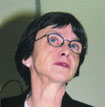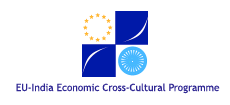
When I was asked by Dr. Peter Hacker to say something about the relations between Italy and Austria, I did not have a easy task before me. It would be easier to talk about areas where the two countries do not have any relations. I have been in Austria for only one year now. I worked previously in the Scandinavian countries and when I first came here, I could see that Italy was very near, and not only geographically speaking. I am always meeting colleagues and people - at museums, concert houses, - who speak Italian or understand Italian. Many of them confess that they have parents or grandparents from Italy.
Italo-Austrian relations have always been strong throughout history ever since Roman times. Before the Congress of Vienna and the first war world, those relations were rather complex and not always peaceful. But after the war, they began to grow, becoming stronger and stronger. The contrasts in the last century have their roots in the Austrian domination of northern Italy. A domination which was not welcome or popular but which left important and visible traces in many fields in Lombardy and the Veneto in public administration, postal services, canals and roads but also in literature, arts, music. Austrian artists worked in Italy for shorter or longer periods, and Italian artists were invited to Austria. This was not unusual because in previous centuries many Italian artists had been active at the Austrian court. Pietro Metastasio, the poet, worked there for fifty years, as did the composer Salieri, Vivaldi, Goldoni and many others. On the border, cities like Trieste, Udine and Trento had and still have peculiarities not typically Italian for their particular geographical position and the encounter of different peoples. In 1935, Italy and Austria signed their first agreement to promote cultural activities in both countries. And we still see the positive results of that cultural agreement every day. Unlike any other country in the world, Austria has not one but two cultural institutes in Italy. We also have two, one in Vienna and one in Innsbruck.
When I first came to Vienna one year ago, a major exhibition of works by the Italian architect, Borromini, was running at the Albertina Museum, which boasts the most extensive collection of drawings by Borromini. This year in May, we celebrated the three hundredth anniversary of the birth of the poet, Pietro Metastasio, who lived for fifty years at the court of Maria Theresia. In those fifty years, he never learned the German language. He did not have to because at that time Italian, as well as German and French, was spoken at the court in Vienna. One month later, in June, we celebrated the composer Antonio Salieri. He is famous mainly because of Mozart but Schubert and Haydn were also among his pupils. We also had two large exhibitions in Salzburg, one with the works of Carlo Carrà, and one, not yet concluded, displaying the works of Filippo De Pisis.
Next year we shall have something special on the programme. On 16 June, a marble monument by the Italian artist Gianni Aricò of the Venetian composer Antonio Vivaldi will be unveiled in Vienna. Vivaldi died in Vienna in 1741, one year after he had left Venice. Of course the cultural agreement involves much more than these high-profile events. We exchange scholarships and teachers at universities and in the high schools. From the beginning of the next school year, a bilingual school will open in Vienna where pupils from the primary school will attend classes taught in both Italian and German.

